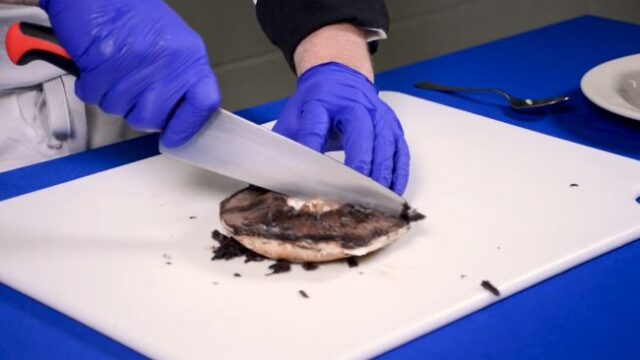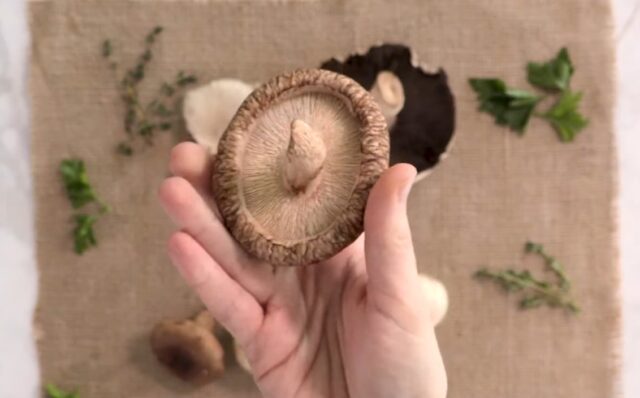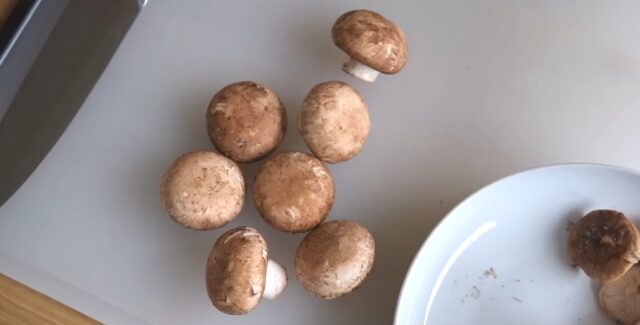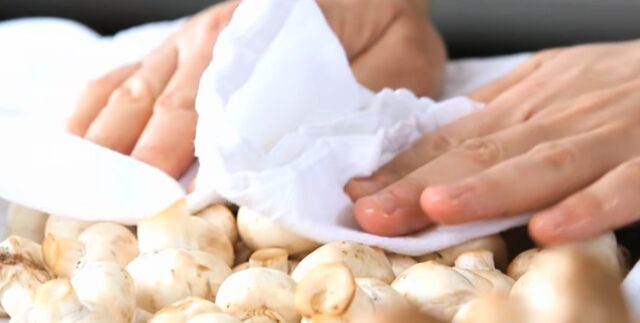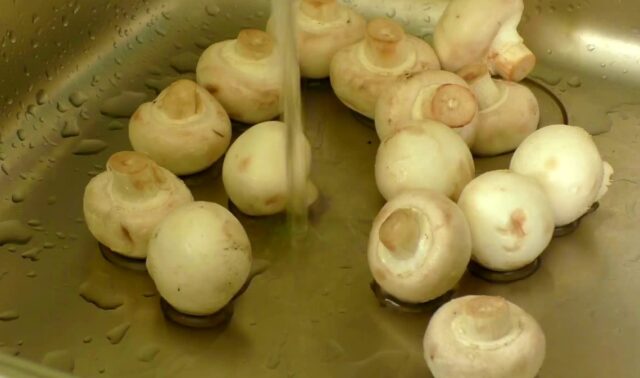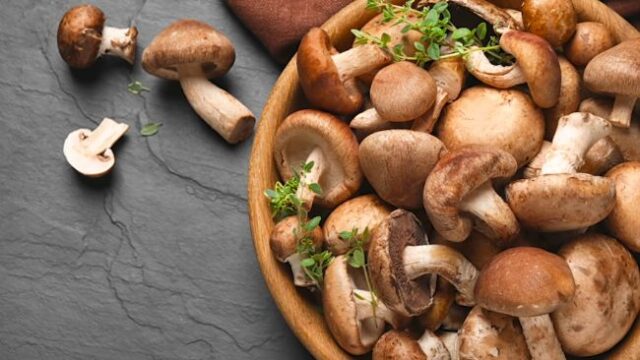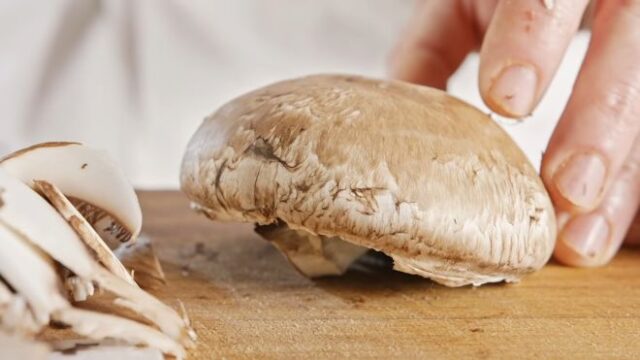
Portobello mushrooms, with their meaty texture and earthy flavor, have gained tremendous popularity in culinary circles. Whether you’re grilling them as a burger substitute, incorporating them into pasta dishes, or using them as a hearty pizza topping (my personal favorite), they are a perfect choice.
However, to fully enjoy their flavor and ensure a pleasant culinary experience, it is essential to know how to properly clean them. In this comprehensive guide, we will explore trouble-free tips for cleaning Portobello mushrooms, helping you enhance their taste and texture while ensuring optimal food safety.
Why Cleaning is Essential?
Mushrooms are grown in a natural environment and can harbor dirt, debris, and potential contaminants. Cleaning them removes these impurities which makes it an obligatory step. Additionally, proper cleaning enhances the overall taste and presentation of dishes, allowing the natural flavors to shine through.
Selecting Fresh Mushrooms
Here are some tips for selecting the freshest ones:
- Appearance: Choose mushrooms that are firm and plump, with smooth and intact caps. Avoid the ones with bruised or discolored spots, as these can indicate spoilage.
- Texture: The mushroom caps should have a slight glossiness and should not be slimy or mushy to the touch.
- Odor: Fresh Portobello mushrooms have a pleasant, earthy aroma. Avoid the ones with a pungent or foul smell.
By carefully selecting fresh mushrooms, you set the foundation for a delicious culinary experience.
Gently Brushing off Excess Dirt
The first step in cleaning is to remove any loose dirt and debris. Follow these steps:
1. Use a soft-bristled brush or mushroom brush: Gently brush the caps and stems with a soft-bristled brush or a dedicated mushroom brush. This helps remove dirt without damaging the delicate surface.
2. Brush in gentle, circular motions to dislodge any dirt particles. Pay attention to the gill area and crevices, as they tend to trap debris.
By employing this gentle brushing technique, you effectively eliminate loose dirt and prepare the mushrooms for further cleaning.
Wiping with a Damp Cloth or Paper Towel
After brushing off excess dirt, the next step is to wipe the mushrooms with a damp cloth or paper towel. Follow these steps:
1. Dampen a clean cloth or paper towel: Moisten a clean cloth or paper towel with a small amount of water. It should be damp but not excessively wet.
2. Gently wipe the caps and stems using the damp cloth or paper towel. This helps remove any remaining surface dirt and impurities.
3. Avoid oversaturation: Ensure that the cloth or towel is only damp.
4. Wiping them with a damp cloth or paper towel provides a final touch, leaving them clean and ready for cooking or slicing.
Avoiding Excessive Water Exposure
One crucial point to remember when cleaning Pis is to minimize water exposure. Mushrooms are porous and can readily absorb water, which can lead to a waterlogged texture and diluted flavor. Here’s how to avoid excessive water exposure:
- Avoid soaking mushrooms: Resist the temptation to soak them in water, as this can lead to undesirable texture and flavor changes.
- Minimal rinsing, if necessary: If you need to rinse the mushrooms, do so sparingly and for a short duration. Hold them under gently running water and quickly rinse off any remaining dirt. Pat them dry immediately.
By being mindful of water exposure, you preserve the integrity of the mushrooms and ensure they retain their unique taste and texture.
Trimming the Stems
Trimming the stems is an optional step, but it can contribute to a cleaner and more visually appealing presentation. Here’s how to trim the stems:
Assess the condition of the stems: Inspect the stems for any tough or woody parts. These can be removed to ensure a pleasant texture.
Use a knife to remove tough sections: If you identify any tough or woody portions, carefully trim them away using a knife. Create a clean and even base for the mushroom caps.
Trimming the stems allows for uniform cooking and a more refined appearance, particularly when using the mushrooms in dishes where the stem is exposed.
Removing the Gills (Optional)
The gills, the thin dark flaps found on the underside of caps, are edible but can sometimes contribute a slightly bitter flavor and darken sauces or fillings. Removing the gills is a matter of personal preference and the specific dish you’re preparing.
Use a spoon or knife to scrape out the gills from the underside of the mushroom caps. Apply gentle pressure to avoid damaging the caps.
Keep in mind that removing the gills can affect the flavor and appearance of dishes. Some recipes may call for the distinct look of mushrooms with gills intact.
Inspecting for Insects or Worms
Thoroughly inspecting for any signs of insects or worms is an important step to ensure food safety and a pleasant eating experience. Follow these steps:
- Examine the gill area: Pay close attention to the gill area, as it can be a hiding spot for small insects or worms. Use a flashlight or natural light to help identify any irregularities.
- Check crevices and stems: Inspect the crevices and stems, as insects may occasionally seek refuge in these areas.
- Discard infested mushrooms: If you notice any mushrooms with noticeable infestations, it’s best to discard them to avoid consuming contaminated specimens.
Storing
Place the cleaned mushrooms on a paper towel and gently wrap them. The paper towel helps absorb excess moisture. Transfer them to a breathable container like a paper bag or a container with air vents. This allows for air circulation, preventing moisture buildup and extending the shelf life.
Place the container in the refrigerator and aim to use them within a few days for optimal taste and texture.
Proper storage is crucial to maintain the freshness and quality of the mushrooms.
Tips for Cleaning Large Batches
For large batches use a colander or large bowl. Rinse multiple mushrooms at once. Run water over them and gently swirl to remove dirt. Lay them on a clean towel or cloth and pat them dry. This method allows for effective drying without overcrowding the mushrooms.
It is very important to avoid using harsh chemicals or detergents.
FAQs:
Can I clean with vinegar or lemon juice?
It’s best to avoid using strong acids like vinegar or lemon juice, as mushrooms can absorb their flavors.
Should I rinse them with warm or cold water?
It’s recommended to rinse them with cool or lukewarm water, as hot water can affect their texture.
Can I clean them in advance and store them for later use?
It’s best to clean mushrooms shortly before use to maintain their freshness and quality.
Should I remove the entire stem when cleaning?
Only remove the tough or woody parts of the stem, ensuring a clean and even base for cooking or presentation.
How long can cleaned Portobello mushrooms be stored in the refrigerator?
They can be stored in the refrigerator for a few days for optimal taste and texture.
Conclusion
There are numerous types of mushrooms, each with its own distinct characteristics and flavors. The world of mushrooms offers a diverse range of options to tantalize your taste buds.
Cleaning Portobello mushrooms doesn’t have to be a daunting task. By following these trouble-free tips, you can confidently prepare your them while ensuring optimal taste, texture, and food safety.
Remember, proper cleaning enhances the overall flavor and presentation of your dishes, allowing their true essence to shine through. Embrace these tips, and get ready to elevate your mushroom-based creations to new heights of culinary delight!

